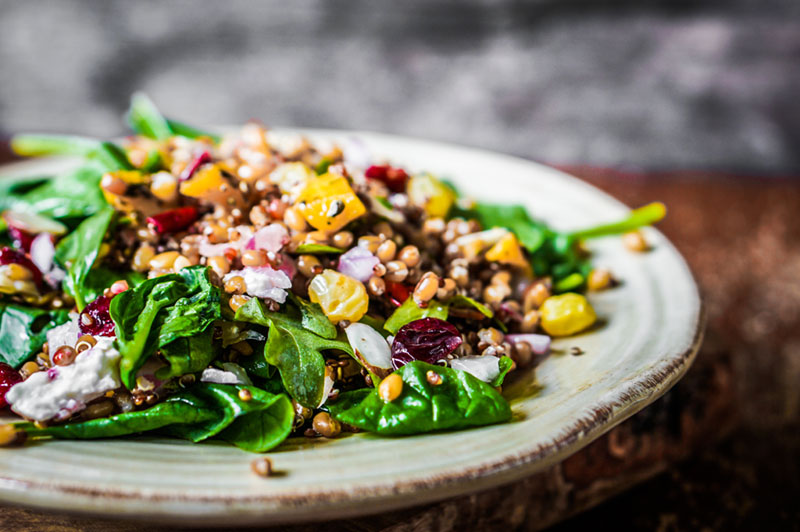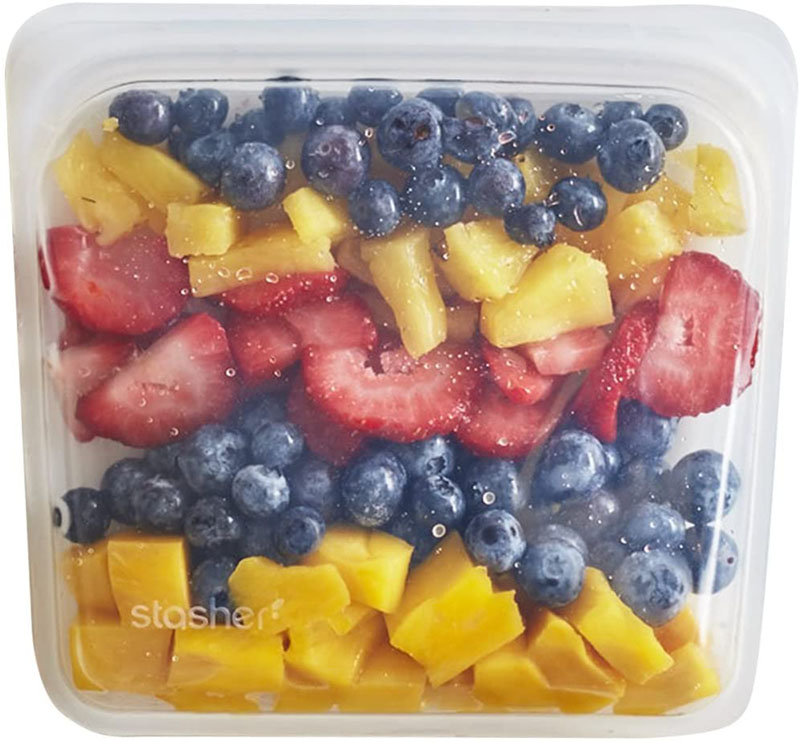In 2019, the U.S. Bureau of Labor Statistics reported that the average American household spent about $3,526 on fast food, dining out, and takeout meals—almost equal to the amount ($4,643) we spent on groceries.
It’s safe to say that dining out has become a much more established activity in our weekly routines; we’re doing it 94% more often than we did in 2003. Half of Americans have reported that they “hate to cook,” and for the rest of us, there’s nothing quite like catching up with old friends at a newly-opened restaurant or stopping for a morning coffee and bagel at our local cafe.
Dining out is exciting, it’s convenient, it’s a great way to try new foods, and…it’s pretty awful for the planet.
This article will present just a taste of some ways our restaurant habits are ruining our planet, as well as 8 simple tips for eating out in an Earth-friendly way.
Why is Global Warming on the Menu?
The hospitality sector is responsible for a huge portion of the world’s food plastic packaging (cups, cutlery, cling wrap, crates, bottled water), but has been credited with properly recycling just 45% of it.
Then there’s food waste to tackle: not only are American restaurants losing about $2 billion every year in food waste, but each restaurant is responsible for about 25,000 to 75,000 pounds of food waste every single year.
The environmental impact of food waste is something to be saved for another article, but we’ll leave you with this simple and shocking fact: if food waste were a country, it would be the third largest greenhouse gas emitter.
Food doesn’t have to be just the cause of global warming, it can be the solution, too. Here’s how:
8 Tips for Dining Out Sustainably
1. Eat Seasonally
We’ve gotten pretty used to eating whatever we want, whenever we want. It’s hard to even fathom “seasonal” produce when what we’re eating comes from all around the world.
Once you get a taste for seasonal produce (this seasonal food guide can help!), you’ll start to realize that eating asparagus in February or butternut squash in June means that it must be coming from far, far away.
Some restaurants will actually help us with this. They’ll switch up their menus based on seasonal availability or have certain items that are only available at certain times of the year.
Not only is eating seasonally better from a sustainability standpoint, but our taste buds will be satisfied, too.
2. Check Out More Than Just the Menu
Sometimes it’s hard to tear our eyes away from a menu—especially when everything sounds soooo good. However, this can be a good way to determine the sustainability of our dining choices.
Take a look around: are there TVs plastered on every wall? Are the tables covered in those disposable paper table coverings? Does every table—whether they want it or not—receive a bowl of bread and individually-wrapped butter?
What about other aspects of sustainability? Do the employees look happy? Does the restaurant, as a whole, seem to actually care about food?
Eating is the one action we have that most directly connects us to the planet—if that’s being replaced by all-you-can-eat “food” or drowned out by gruff waitstaff or the sound of several different sports events, then there’s a chance you’d find more sustainable dining choices elsewhere.
PRO TIP: Always refuse a straw (or bring your own). If you end up with a tower of unused napkins on your table, take those home (they’ll just be thrown away anyway).
3. Re-define the Doggie Bag
The doggie bag, or the bag used to take home leftover food (ostensibly to feed a dog) has become something that less of us take advantage of—even when portion sizes have grown significantly.
Don’t be afraid to ask for your leftovers! Better yet, prepare for your leftovers. Bring a tupperware container with you, or stash a few Stasher bags in your purse so that you don’t end up with a styrofoam box.
Then, make sure you actually eat the leftovers—don’t forget about them in the back of your refrigerator! Depending on what you have, spice it up with some extra vegetables, add a fried egg, or turn it into a leftover bake with some cheese. Get creative so that you can prevent food waste.
Or, when all else fails (and it’s safe to do so), feed those leftovers to your dog.
4. Eat Your Vegetables
Craving surf and turf? Think twice before ordering. Animal agriculture has been associated with about 14.5% of our total greenhouse gas emissions and 90% of the world’s fish are overexploited.
Does this mean that animal products are totally off the menu? No, it doesn’t. We would suggest, however, that you minimize how much meat you consume. Instead of the triple-bacon burger, maybe opt for a smaller cut of beef or a steak salad. Or, try a more environmentally-friendly meat (like chicken or turkey) instead.
Make vegetables the main star of your lunch or dinner, or use a dining out experience as a way to experiment with vegetarianism (when you’re not cooking, it’s easier to try new things). Fruits, vegetables, and grains have smaller carbon footprints—and your health will thank you, too.
And if you’re interested in learning more about the environmental benefits of reducing of your meat intake, be sure to check out our article all about this here.
5. Try Drinks from the Tap
Not only do drinks make up a significant portion of the total bill (likely much higher than you would expect), but they’re also associated with a lot of packaging. Unless you’re able to order freshly-squeezed orange juice, your soda or glass of wine was likely packaged in either plastic or glass.
Tap water is by far the best way to stay healthy, quench your thirst, and keep our planet cool.
If you want to minimize your impact and enjoy something that isn’t water, beer on tap is the next best option. There’s no plastic involved and you won’t have to worry about the restaurant tossing that can or bottle into…dare we say…the trash can.
PRO TIP: Finish all of your water! Just imagine all of the water that remains on your table—and all of the other tables—then think about areas of the world where water is scarce. Hydration is good; wasting clean, quality drinking water is not.
6. Look for Locally Sourced Ingredients
Local ingredients are not only better for the environment (less storage and shipping emissions), but they’re also far tastier and more nutritious.
After just 24 hours, a fruit or vegetable will start to lose some of its nutrients, so when that kale salad is made from ingredients picked earlier that day, you’re going to enjoy something that’s riper and better for you.
Not just that, but by choosing a restaurant that supports local producers, you’re doing your part to support a thriving local economy. Instead of a portion of your bill going to a mega farm in a different state or country, you’re supporting a family in your region.
7. Order Organic
Eating organic has been proven time and time again to be better for our bodies and the planet. When a food has been produced organically, it’s free of pesticides (which can end up being stored in our bodies), isn’t produced with a chemical concoction of fertilizers, and is a better way to support natural ecosystems.


Yes, you’ll likely pay a little bit more for a menu item or restaurant that uses organic products, but maybe that’s a good incentive to stay home and cook more often 🙂
8. Start a Conversation
Many of the positive changes we’re seeing in restaurants—like sourcing seasonal, locally grown, or organic produce—is a result of consumer demand.
If you have a favorite restaurant that insists on passing out straws or hasn’t formed partnerships with local producers, let them know that you’d like to see some changes! Ask about where their meat and produce comes from, or suggest a rotation of seasonal dishes.
Similarly, when you order a vegetarian dish, talk about it with the friends and family members you’re dining with. Politely suggest that they order water instead of soda, or bring plastic takeaway containers so that nobody leaves a plate full of food behind.
2020-2021 Means More Ordering In
These tips for dining out sustainably can also be applied to something we’re all doing more of these days: ordering in.
You can make an online request that you don’t receive cutlery or straws with your order. You can skip the drinks and just enjoy water from the tap. You can choose seasonal dishes and prioritize restaurants who use organic produce. Better yet, you can support a local restaurant and walk to pick up your order, instead of having it delivered.
Ordering in and dining out sustainably are both possible—and once you start making some changes to your ordering routine, you’ll likely find that it’s more delicious, too.















